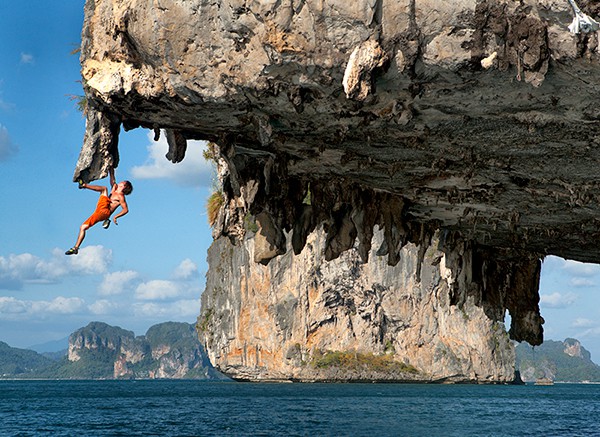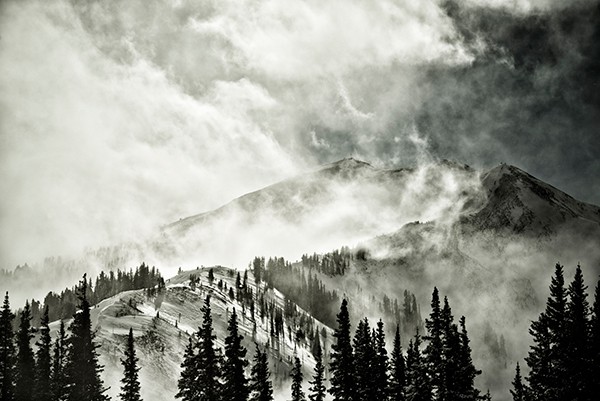Share
Building Lasting Editorial Client Relationships
This interview is just one of many from our free, downloadable Guide: Breaking Into Editorial Photography. For more tips, download your copy today,...

This interview is just one of many from our free, downloadable Guide: Breaking Into Editorial Photography. For more tips, download your copy today, here.
David Clifford has been on both sides of editorial photography. A sought-after outdoor photographer and videographer with more than 20 years of experience, this Aspen and Denver, Colorado-based shooter is also a former photo editor for Rock and Ice Magazine and Trail Runner Magazine. As a photo editor, he has mentored many of the best outdoor photographers in the U.S. and helped start the Rock and Ice photography workshops. Now a full-time, award-winning photographer, his editorial clients include National Geographic, GQ, Men’s Fitness, Outside Magazine and more.
PhotoShelter:  How do you find and market yourself to photo editors you haven’t worked with before? 
David Clifford: There’s never one way to go about it, but if you want to make a connection with a new photo editor, you should do something personal. Send them a mailer with a personal note, and then try to get face time. If you’re visiting their city, give them a head’s up and say, ‘I’m in your area, I’d like to buy you coffee.’ I don’t think there’s a better way of getting the attention of a photo editor than just getting five minutes of face time, buying them coffee and being very personable.
I also meet photo editors at NYCFotoWorks. It’s a great tool. Once they see my work and meet me face to face they often will remember me and my work.
How do you make the most of an event like NYFotoWorks?
FotoWorks puts together a list of reviewers—photo editors, art buyers, reps and agencies—and you can buy into meetings. If you’re a new photographer, you’d try to get in with photo editors that you’d like to work with. If you’re more experienced, you might try to hook up with an agency or rep that has clients that mesh up with the work that you do.
You have 15 minutes to make an impression, so you re- ally have to have a good portfolio or presentation put together. It would be smart to have multiple books ready to go if you shoot different things.
How do you make best use of your time with a photo editor?
I shoot video and photos, so I usually bring in a short video. I like to show that first, then show them my book for about five minutes, and then talk for five minutes. Sometimes the reviewer will dictate how the meeting is going to run, but I’ve always had more success if I dictate how the meeting is going to be run, without being difficult. I try to get them hooked on what I can do, tell my story, and then we have some time to chat and catch up.
I think it’s important to not only present your book well and your work well, but also to be very personable. They can get a sense of whether or not they want to work with you. That’s really important.
When working with a new client, how do you make a good impression and showcase your professionalism? 
I would like to think that the images speak for themselves, but in reality there is so much more to it. Every time I do a job, I try to make sure I over-deliver; that they’re so happy with the photos that there’s no reason they would think of hiring somebody else in my area. I try to be over-prepared and on time and do my best to communicate.
For example, I’ll spend a whole day prepping for a shoot so everything is ready the night before. I make sure my equipment is charged up and everything works. I’ll pack lights in case the day is too dark. I also put together a little kit on the side with things like a screwdriver, an Allen wrench, fresh batteries, and gaffer tape; if something goes wrong I can fix it on the fly. You can’t prepare for everything, but you have to have a couple of things ready to go.
I also make sure to stay in touch with the photo editor if something goes wrong. For example, for a recent Wall Street Journal shoot, the athlete I was supposed to photograph was overbooked and rescheduled twice. Right away I contacted the photo editor to let her know. When it finally came together, I went above and beyond by going to a mountain with one of the best views in all of North America. It made for a longer day, but the photo editor was thrilled and actually told me to invoice for more than the price we’d agreed on.
Do you like to bring new ideas to the table when working with a photo editor or let him/her take the lead? How do you balance this?
When I have an idea for a shoot I will often get the shot the photo editor needs first and then get something I think might be more creative or slightly edgier. I remember a time when there weren’t as many photographers and it was easier to build a reputation. Now there are so many photographers fighting for space that you really do have to go the extra mile to make sure they want you the next time. Always get the bread and butter shots first, though. 
How do you handle the negotiation process with photo editors so you get a price you feel good about?
Getting an editorial rate that you feel good about is not an easy thing to do. If it’s an editorial shoot I ask for additional payment to cover any related expenses that are not always covered. There are other factors to consider, like how quickly a magazine pays photographers. Some of these big players are just really cheap, but some of the smaller magazines are paying almost as well as the big ones, and they’re paying 30 days from publication automatically. I like that. Tracking down payments is a hassle.
Do you find that you’re able to sell your editorial images elsewhere once the shoot is over? 
I sell a little on stock, but it doesn’t work for a lot of my work. But if I think I can resell images on stock, I’ll ask my model for a model release. I’ll let them know that I might try to sell the photos in the future, and I’ll give them a kickback of $20 to $100. But I don’t make a lot of money because I don’t put a lot there and also because the stock market imploded five or seven years ago.
For me, I’d rather use editorial shoots as a tool for bring- ing in bigger clients. I sometimes find value in over producing a shoot on the editorial side so that I can do a direct sale later. For example, an athlete I was shooting for The Wall Street Journal was sponsored by a clothing line. After the paper uses the photos, I can submit those shots to the clothing line for potential catalog sales. Sometimes it works, and sometimes it doesn’t.
What’s the biggest challenge in working with photo editors? 
The biggest challenge working with photo editors is that they are often limited on time. So you should be easy to work with and communicate well. I often get calls from editorial clients not just based on my work but also on my ability to communicate with the photo editors.
Do you have any “don’ts” for working with photo editors or lessons learned the hard way? 
I remember when I was a photo editor I emailed three low-res digital images to another magazine photo editor whom I wanted to shoot for. He was upset with me for not following the standard protocol that the magazine had set up for photographers to submit work. From that I learned that you should always do due diligence when you want to work with a photo editor. Find out how they prefer to be contacted, if possible.
How do you keep in touch and foster the relationship after a job is over? 
Honestly, I am terrible at keeping in touch with photo editors. I assume they are very busy and will call me when they need me. But I do use social media to showcase what I’m working on. Instagram, to me, is the most important social media tool out there. It aligns perfectly for photographers. It’s a great way to show photo editors and art buyers what you’re up to or show something you’ve shot in the past that you haven’t shared. At first, I used Instagram as more of a diary, but now I look at it as a curated gallery of images that I think people will want to see. I’ve had art directors and art buyers contact me directly because of something on my Instagram feed. For instance, when I was traveling recently, a photo editor in that city saw that I’d posted a picture from a local coffee shop and messaged me to see if we could meet for coffee.
What do you post on Instagram?
I post lots of running, climbing, skiing, and some por- traits. I try to make sure the images are either inspiring, beautiful or relate in some way to my audience. I post about once a day about five days a week. I’ll do one Ins- tagram post and copy it to Facebook and Twitter. For a while I only had 200 followers. To grow my following, I spent two months posting shots that I thought were awesome and that people would like, and I’d hashtag it. I grew to 2,600 followers in a few months by posting images that had power and relevance to my followers. And that’s not a lot compared to others, but it works for me.
Want more tips on how to start getting your dream editorial clients? Download the Guide today!




